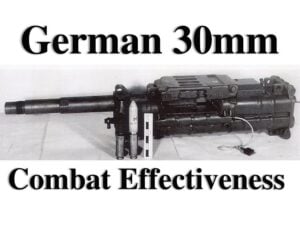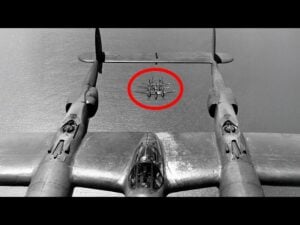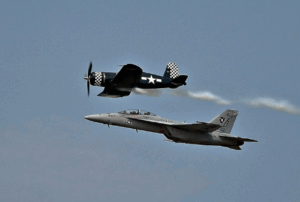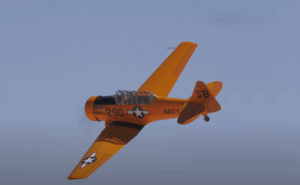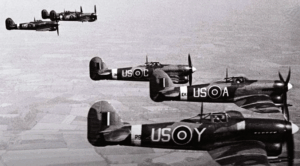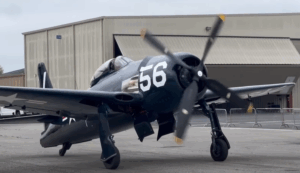Uncovering the Lesser-Known Flying Fortress of WWII

via hw97karbine / YouTube
On a brisk morning in April 1950, the engines of the PB4Y-2 Privateer roared to life on a runway in Wiesbaden, West Germany. Known as the “Turbulent Turtle,” this aircraft was not just a relic of World War II’s Pacific campaigns but a key player in the Cold War’s early days. Tasked with a dangerous mission, it prepared to penetrate the Iron Curtain and gather critical signals intelligence over the Baltic Sea. This mission highlighted the versatility and endurance of a plane originally designed for wartime operations, now adapted to face new challenges in an increasingly divided world.
Evolution of the PB4Y-2 Privateer from the B-24 Liberator

The Privateer was born from the B-24 Liberator, one of the most widely used bombers of World War II. Modified extensively to meet the demands of naval operations, the Privateer was equipped with advanced radar systems, electronic countermeasures, and a redesigned fuselage. These changes turned it into a formidable patrol aircraft capable of handling the Navy’s long-range missions. As it neared the coast of Latvia, the “Turbulent Turtle” encountered Soviet fighters, a stark reminder of the tensions that defined the Cold War era. The crew’s primary mission shifted from intelligence-gathering to survival, underscoring the perilous nature of such operations.
The B-24 Liberator itself was a remarkable aircraft that contributed significantly to Allied efforts during World War II. Over 18,000 units were produced, making it the most manufactured American military aircraft of its time. Its unique twin-tail design and high-mounted Davis wing provided exceptional range and speed. The bomber could carry up to 8,000 pounds of bombs, making it ideal for strategic bombing missions. Powered by four Pratt & Whitney R-1830 radial engines, the B-24 could reach speeds of over 300 miles per hour and had a range exceeding 2,000 miles. Crewed by 10 individuals, including pilots, bombardiers, and gunners, the B-24 played a crucial role in campaigns across Europe, North Africa, and the Pacific.
Despite its effectiveness, the B-24 was not without its challenges. Crews often found it difficult to handle, earning it the grim nickname “The Flying Coffin.” Even so, its versatility made it invaluable for various missions, including long-range bombing, anti-submarine patrols, and cargo transport. Recognizing its potential, the U.S. Navy adapted the B-24 for naval use, designating these modified aircraft as PB4Y-1 Liberators. These initial changes included minor adjustments to better suit maritime operations, but they soon led to the development of a completely new aircraft—the PB4Y-2 Privateer.
PB4Y-2 Privateer: Adaptations for Naval Superiority

The Privateer shared many features with the Liberator but was specifically tailored for naval missions. Its fuselage was lengthened to accommodate additional equipment and crew members, including a dedicated flight engineer who managed critical aircraft systems. The Astrodome, used for navigation, was relocated behind the first dorsal gun turret. Radar antennas and electronic countermeasures were installed along the fuselage, making the Privateer a cutting-edge reconnaissance aircraft for its time. The aircraft’s most noticeable change was its single vertical stabilizer, a departure from the Liberator’s twin-tail design. This modification improved stability and maneuverability, particularly at the medium altitudes favored for naval operations.
Armed with twelve .50 caliber M2 Browning machine guns, the Privateer was well-defended against enemy threats. These weapons were strategically placed to cover all angles, ensuring the crew could respond to attacks from any direction. Unlike its predecessor, the Privateer omitted the Liberator’s ventral turret to reduce weight, enhancing its overall performance. The absence of turbochargers—unnecessary for the lower altitudes at which it operated—further streamlined the aircraft, allowing it to perform its duties with remarkable efficiency.
The Privateer entered service in 1943, with its impact becoming most notable in the final stages of World War II. Patrol Bomber Squadrons 118 and 119 were among the first to receive these aircraft, using them for a variety of missions in the Pacific theater. By early 1945, the Privateer was actively involved in operations ranging from surveillance and search-and-rescue missions to offensive bombing campaigns. These missions included targeting Japanese coastal installations and providing support for larger bombing operations conducted by Army Air Forces’ B-29 Superfortresses.
Vital Roles in Weather Reconnaissance and Post-WWII Conflicts

One of the Privateer’s most demanding roles was as a weather reconnaissance aircraft. Tasked with monitoring typhoons and hurricanes, these missions often proved as dangerous as combat. During one such mission, the Privateer with the tail number 59415 was lost while investigating a typhoon near the Philippines. Another aircraft, 59716, disappeared during a reconnaissance flight over Super Typhoon Doris in 1953, with no trace of the crew or wreckage ever found. These incidents underscored the risks faced by crews operating in extreme weather conditions.
The Privateer’s service extended beyond World War II, playing a significant role during the Korean War. In the early 1950s, these aircraft were used for nighttime patrols and reconnaissance missions, often dropping flares to illuminate enemy positions for United Nations forces. These “Firefly missions” were fraught with danger, as crews faced anti-aircraft fire while navigating treacherous terrain. Despite their aging design, the Privateers proved invaluable, providing critical support in a conflict that demanded innovative tactics and unyielding determination.
While the PB4Y-2 Privateer may not enjoy the same level of recognition as other wartime aircraft, its contributions to both World War II and subsequent conflicts highlight its importance. Adapted from the versatile B-24 Liberator, the Privateer demonstrated how innovation and adaptability could extend the life and utility of a proven design. From the Pacific theater to the early years of the Cold War, this aircraft stood as a reliable workhorse, fulfilling a wide range of missions with remarkable effectiveness.













